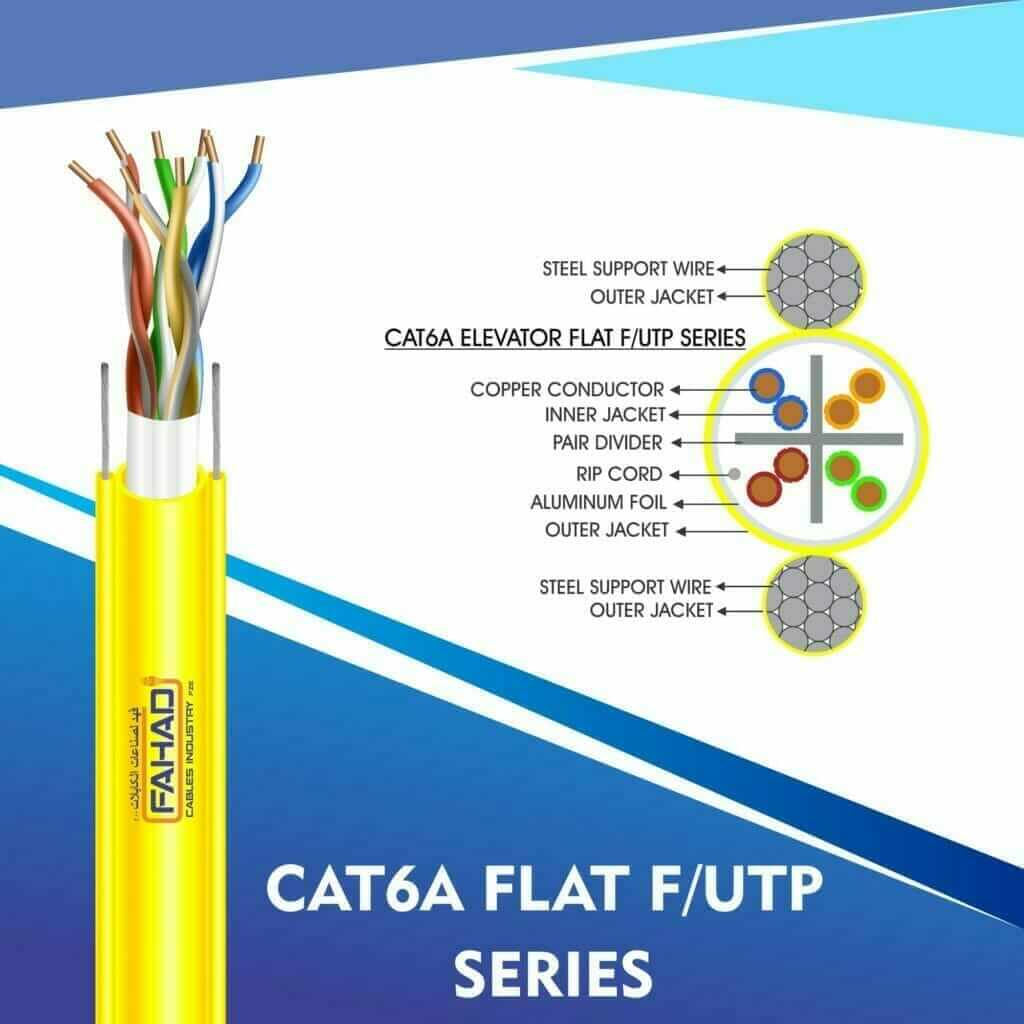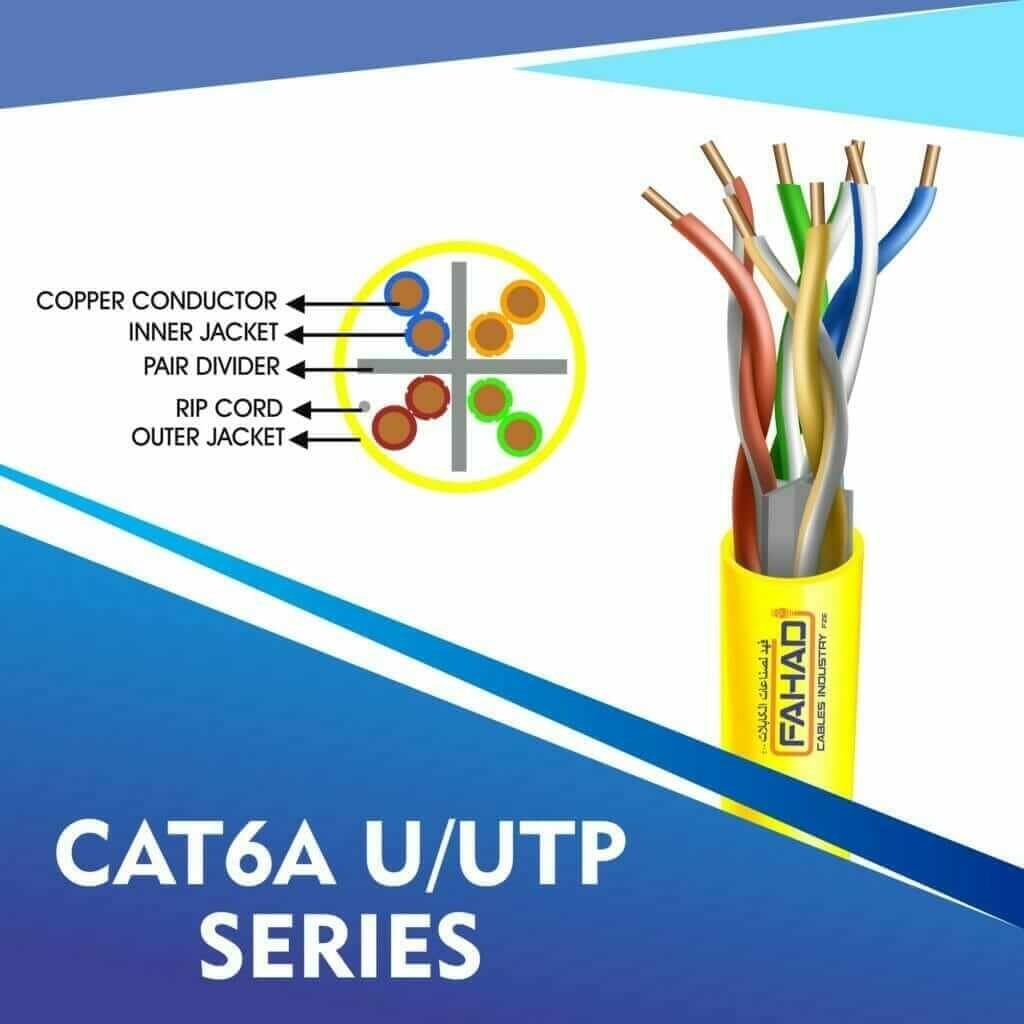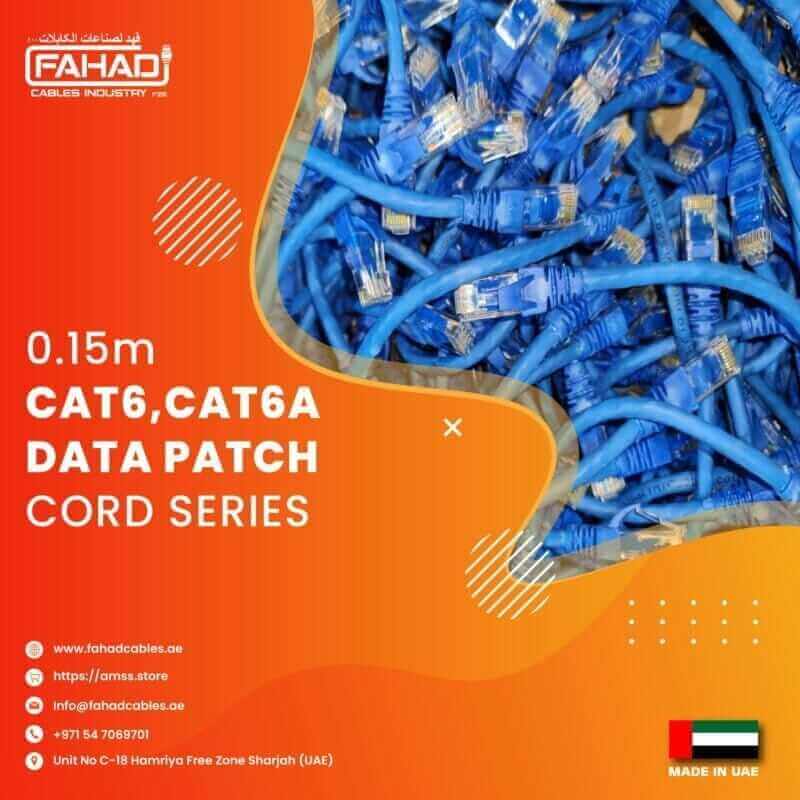- Network Cables
- Control automation Cables
- Data Patch Cord
- fiber optic cable
- Fiber Patch cord Multimode
- Fiber Patch cord Single Mode
- Fiber Pigtails Series
- Coaxial Cables
- security cable wire
- alarm cable
- speaker cables
Understanding Cat6 Color Codes: Insights from Fahad Cables Industry FZE

Introduction to Cat6 Cables
Cat6 cables, also known as Category 6 cables, have emerged as a crucial component in modern networking infrastructures. Utilized primarily for Ethernet connections, these cables are designed to transmit data at high speeds, making them a popular choice for both residential and commercial applications. The primary purpose of Cat6 cables is to facilitate seamless communication between devices, which is essential in an increasingly digital world.Cat6 Color Codes cat 6 colour code cat 6 colour coding utp cable color coding cat6 colour code
The basic structure of a Cat6 cable consists of four twisted pairs of copper wires, which are designed to reduce electromagnetic interference and crosstalk. cat 6 cat 6a This configuration allows for a significant cctv cat6 cable color code increase in transmission speeds and bandwidth, with the potential to support data rates of up to 10 Gbps over limited distances. cat 6 cat 6a The ability to deliver high-speed connections renders Cat6 cables vital for the operation of data centers, computer networks, and home Internet applications. color code cat5 colour code cat 6 cable colour coding cat 6 network cables color code cat6 color coding
data cable color code
Significantly, the performance specifications data cable color code set for Cat6 cables enhance their capabilities compared to their predecessors, such as Cat5 and Cat5e. These cables can effectively handle frequencies of up to 250 MHz, providing greater efficiency and reliability for users. As wire code businesses and homes alike demand networking cable colour code faster Internet speeds and more robust network capabilities, the significance of Cat6 cables continues to grow. Moreover, their reliability makes them an essential part of Ethernet technology, ensuring that connections remain stable even as network demands increase.





In summary, the introduction of Cat6 cables marks an important advancement in networking standards. With their intricate design and robust functionality, these cables play a pivotal role in ensuring effective communication across diverse digital platforms, reinforcing their status as a mainstay in the world of networking equipment.
The Importance of Color Coding in Networking
In the realm of structured cabling systems, color coding plays a pivotal role in ensuring efficient installation, maintenance, and troubleshooting. Networking infrastructure requires meticulous organization, and color coding provides a visual guide that simplifies the complex web of cables and connections. By adopting standardized color codes, colour coding of lan cable technicians can swiftly identify specific cables, reducing the chances of errors during installation. An organized approach to color coding not only expedites the setup process but also enhances the overall performance of the network. cat6 color coding
Effective color coding is crucial when it comes to troubleshooting network issues. In a scenario where connectivity problems arise, being able to easily locate and identify color-coded cables allows technicians to isolate faults much more efficiently. For instance, if a certain color denotes a particular cat 6 colors type of cable or connection, the technician can quickly reference the color system to determine where potential issues may lie. This efficiency minimizes downtime and ensures that any disruptions to communication networks are resolved promptly.
ethernet cat 6 color code
Moreover, incorrect wiring poses ethernet cat 6 color code significant risks to network integrity. Mismanaged cables can lead to data transmission errors, reduced network performance, and can jeopardize overall system reliability. Color codes act as a preventative measure, significantly reducing the likelihood of such cat5 color codes mistakes by ethernet cat 6 color code guiding technicians through the wiring process. Proper adherence to the color-coding system not only prevents installation errors but also contributes to safer and more manageable network environments.ethernet cat 6 color code cat6 color chart
Ultimately, the implementation of a well-defined color coding system in networking is integral to achieving operational excellence. As reliance on network cat 6 colours infrastructure continues to grow, adopting these practices will ensure installations meet professional standards, remain easy to navigate, and support ongoing maintenance needs. cat 6 color coding cat 6 cable code cat 6 cable colour code cat 6 color code
Fahad Cables Industry FZE: A Leader in Cable Manufacturing
Fahad Cables Industry FZE has established itself as a prominent manufacturer of Cat6 cables, reflecting a commitment to quality and innovation in the telecommunications sector. Founded with the mission to provide superior cabling solutions, Fahad Cables has grown from its early inception into a key player in the electrical manufacturing industry, with a particular emphasis on producing high-quality data cables. The company’s specialization in cable production includes a range of products that meet various data transmission needs, ensuring reliable and efficient communication.ethernet cat 6 color code cat 6 cat6 cable color code cat six color code cat 6 cable connection colour code
Over the years, Fahad Cables Industry FZE has cultivated an impressive reputation grounded in excellence and adherence to industry standards. By continuously investing in advanced manufacturing technologies and adhering to strict quality control measures, the company ensures that its Cat6 cables not only meet but exceed international standards for performance and safety. The commitment to actualizing best practices in production has earned Fahad Cables a distinctive position as a trusted name among telecommunications professionals and electrical contractors alike.
Moreover, the company focuses on integrating customer feedback into its production processes, which enables it to tailor its offerings to suit evolving market demands. This adaptability, coupled with its rigorous approach to research and development, underscores Fahad Cables’ leadership in the manufacturing ethernet colors of Cat6 and other high-performance cables. As the telecommunications landscape continues to advance, Fahad Cables Industry FZE remains at the forefront, contributing to enhanced connectivity solutions globally.al fahad electrical systems
In conclusion, the growth and success of Fahad Cables Industry FZE as a leader in cable manufacturing are testament to its unwavering dedication to quality, innovation, and customer satisfaction. By specializing in Cat6 cables, the company plays an integral role in facilitating robust and reliable communication in today’s digital world.rj45 color code cat6
Detailed Cat6 Color Code Specifications
Cat6 cables are crucial components in modern networking, offering high-speed data transmission capabilities. These cables are typically designed with specific color codes that dictate how the internal wires are arranged. Understanding these color specifications is essential for effective installation and maintenance. The two predominant wiring standards employed in Cat6 cables are T568A and T568B, each with its own set of color combinations that serve various purposes.
In the T568A wiring standard, the color code follows this sequence: white with green stripes, green, white with orange stripes, blue, white with blue stripes, orange, white with brown stripes, and brown. This arrangement prioritizes the green pairs, which are commonly used for voice communication and some types of data transmission. The T568B standard, on the other hand, includes the following sequence: white with orange stripes, orange, white with green stripes, blue, white with blue stripes, green, white with brown stripes, and brown. This configuration is often preferred in commercial applications due to its compatibility with existing wiring installations.
Each color in these standards corresponds to specific pairs of wires, with the primary colors indicating the role they play in network performance. For instance, the blue pair is typically used for transmission, while the green pair can carry Ethernet protocols. Hence, when installing Cat6 cables, ensuring adherence to these color codes is vital for optimizing network functionality and preventing connectivity issues.cat 6 cable colour coding
It is important to note that although both standards are widely accepted, mixing them within the same network can lead to performance decreases. Consequently, selecting one standard for a particular installation is advised. This understanding of detailed Cat6 color codes not only aids in installation but also enhances troubleshooting capabilities in case of network failures.
Testing and Quality Assurance at Fahad Cables
At Fahad Cables Industry FZE, the commitment to superior product quality is paramount, particularly when it comes to their Cat6 cables. The organization has implemented a rigorous testing and quality assurance process designed to evaluate and ensure the performance and reliability of their cables under various conditions. This process is not only a safeguard for the company’s reputation but also a guarantee for customers seeking trustworthy networking solutions.
In alignment with industry standards, Fahad Cables adheres to a comprehensive testing regime that includes electrical performance measurements, environmental testing, and mechanical assessments. Each batch of Cat6 cables is subjected to a series of electrical tests to measure parameters such as attenuation, crosstalk, and return loss, which are crucial for ensuring optimal signal integrity. The tests are reflective of real-world conditions, enabling a forensic evaluation of performance across a range of frequencies.cat 6 colour code for internet
cat6 color code
Blue, orange, green, brown, slate, white.
Furthermore, environmental tests play a significant role in the quality assurance process at Fahad Cables. These tests expose the Cat6 cables to extreme conditions, including fluctuations in temperature and humidity, to simulate potential scenarios that may impact performance over time. By subjecting the cables to these demanding conditions, the company can confirm their resilience and durability, assuring customers of long-lasting product performance.cat6 colors
Mechanical assessments are equally essential, evaluating factors such as tensile strength, flexibility, and durability. This additional layer of testing allows Fahad Cables to identify and rectify any potential mechanical vulnerabilities in their Cat6 cables before they reach the market. The pursuit of excellence through a systematic approach to testing and quality assurance has positioned Fahad Cables as a reputable supplier in the cable manufacturing industry.
Common Applications of Cat6 Cables
Cat6 cables, renowned for their ability to handle high-speed data transmission, have become increasingly integral in modern networking environments. One of the primary applications of Cat6 cables is within local area networks (LANs), where they facilitate seamless connectivity among devices. Their capacity to support gigabit Ethernet, with speeds of up to 1 Gbps over a distance of 100 meters, makes them a preferred choice for residential setups and small businesses alike, where reliable internet access is crucial.
In larger environments, such as data centers, the usage of Cat6 cables is predominant due to their performance capabilities. Data centers require robust and efficient cable management systems to handle vast amounts of data transfer. The higher frequency support of Cat6 cables ensures that these facilities can function optimally, enabling faster communication between servers, storage systems, and other computing devices. Utilizing Cat6 cables helps to minimize latency and maximize bandwidth, ultimately contributing to improved user experiences.
Moreover, in office environments, Cat6 cabling supports diverse applications, ranging from VoIP (Voice over Internet Protocol) systems to streaming services. As companies increasingly rely on cloud-based applications and services, the need for reliable and high-capacity network infrastructures has become paramount. Cat6 cables effectively cater to this demand, allowing for multiple devices to connect and communicate without compromising performance. They are also essential for enabling video conferencing and file sharing, vital components of today’s collaborative work culture.
In summary, the versatility of Cat6 cables extends across various settings, making them indispensable in both residential and commercial applications. Their adaptability to different networking needs solidifies their position as a foundational element in effective communication networks.
Comparing Cat6 with Previous Standards
The advancement in networking technology has seen a significant evolution from earlier standards such as Cat5 and Cat5e to the more recent Cat6 cables. One of the primary distinctions of Cat6 cables is their enhanced performance capabilities, which are pivotal for modern applications. While Cat5 cables were designed to handle data transmission speeds of up to 100 Mbps, and Cat5e cables allow for a similar speed but with improved interference handling, Cat6 cables take this a step further. They support transmission speeds of up to 10 Gbps over short distances of up to 55 meters, thereby making them suitable for more demanding applications.
Another critical aspect where Cat6 excels over its predecessors is in bandwidth capacity. The Cat5 and Cat5e cables generally provide a bandwidth of 100 MHz, which may suffice for many conventional tasks. In contrast, Cat6 cables boast a substantial bandwidth of 250 MHz, facilitating faster and more reliable data transfer. This increase in bandwidth is particularly advantageous in environments where numerous devices are connected simultaneously, resulting in better overall network performance and reduced latency.
Moreover, Cat6 cables incorporate enhanced shielding techniques that significantly reduce crosstalk and external interference. While Cat5 cables often faced challenges with signal degradation over long distances, the robust construction of Cat6 addresses these issues more efficiently. This makes Cat6 not only a more effective choice for new installations but also a vital option for upgrading existing networks to accommodate higher data demands. As such, switching to Cat6 allows organizations and individuals to future-proof their networking infrastructure, ensuring seamless connectivity as technology continues to advance.
Future of Cat6 and Emerging Standards
The landscape of networking cables is continually evolving, driven by the rapid advancements in technology and the increasing demands for higher performance and data transmission capabilities. As we look to the future, the importance of standards such as Cat6a and Cat7 comes into sharp focus. These emerging standards are designed to offer enhanced bandwidth and speed, enabling networks to support more devices and higher data transfer rates. Cat6a, for instance, is an augmented version of Cat6 that can transmit data at speeds of up to 10 Gbps over distances of 100 meters, while maintaining superior performance in crosstalk reduction and noise cancellation.
Moreover, the introduction of Cat7 cables further elevates performance standards by supporting frequencies of up to 600 MHz and providing improved shielding to minimize interference. This makes Cat7 particularly suitable for environments with high electromagnetic interference or for applications requiring stable, high-speed connections, such as data centers and enterprise networks. Manufacturers like Fahad Cables Industry FZE are keenly aware of these trends, and they are adapting their production processes to cater to the market’s evolving requirements.
As consumer demands shift towards smart homes, IoT devices, and cloud computing, the need for stronger, faster, and more reliable networking solutions is paramount. In response to these technological shifts, manufacturers are not only investing in research and development to refine their cable designs but are also exploring the incorporation of materials and technologies that enhance performance. The future of Cat6 and its successors hinges on the ability to provide networks that can cater to these high-performance applications. Embracing innovation while adhering to established standards remains crucial for companies like Fahad Cables to maintain a competitive edge in the rapidly changing networking landscape.
Conclusion and Final Thoughts
In the realm of networking, the significance of understanding Cat6 color codes cannot be overstated. These color codes are integral to ensuring that cables are correctly wired, which ultimately contributes to the reliability and efficiency of communication networks. Proper adherence to color coding not only helps in achieving optimal performance but also plays a crucial role in troubleshooting and maintaining networking infrastructure. For professionals engaged in the installation or upkeep of network systems, a solid grasp of these standards is essential.
Fahad Cables Industry FZE exemplifies the commitment to quality in cabling solutions. By prioritizing high-quality materials and adhering to established color coding standards, the company enhances the efficacy of networking solutions and minimizes potential issues arising from incorrect wiring. Their dedication to producing reliable Cat6 cables reflects a broader industry trend towards excellence and precision in connectivity solutions.
As networking demands continue to evolve, it is vital to consider the factors that influence the selection of cabling products. Professionals and consumers alike should prioritize vendors who demonstrate a thorough understanding of industry standards, including Cat6 color codes. By doing so, they ensure that their networking needs are met with the utmost quality, reliability, and performance.
In conclusion, understanding Cat6 color codes enhances not only the performance of individual cabling installations but also uplifts the standards within the entire industry. By recognizing the value of quality cabling solutions, such as those offered by Fahad Cables Industry FZE, individuals and businesses are better equipped to make informed choices that will benefit their networking needs in the long run.











